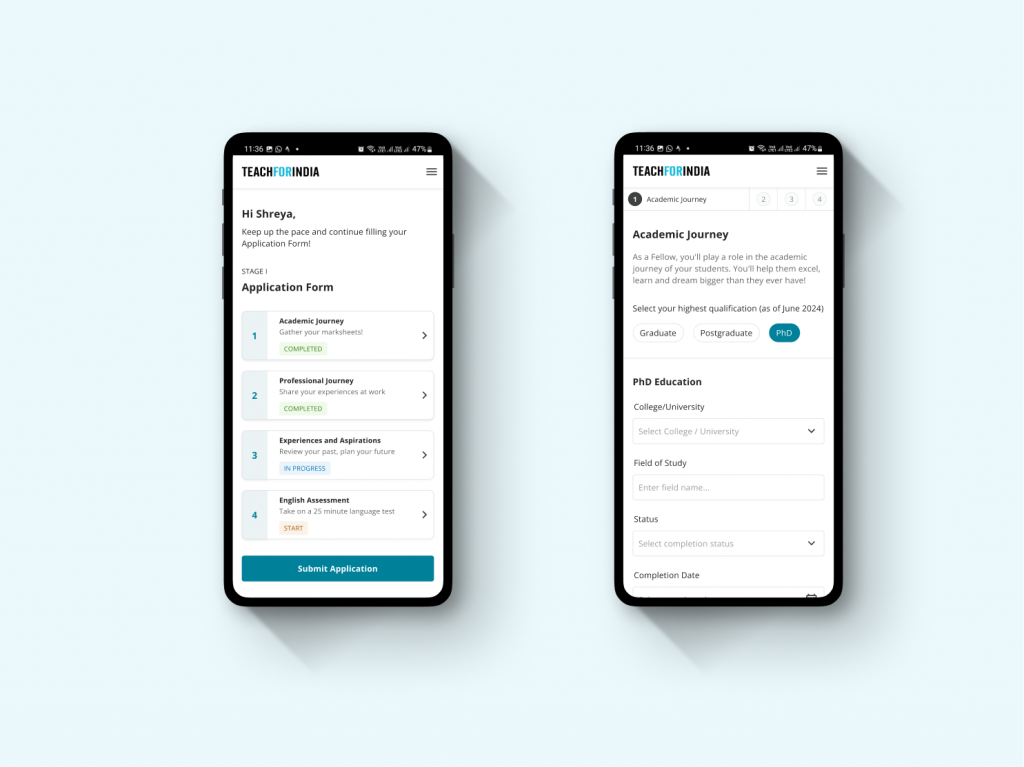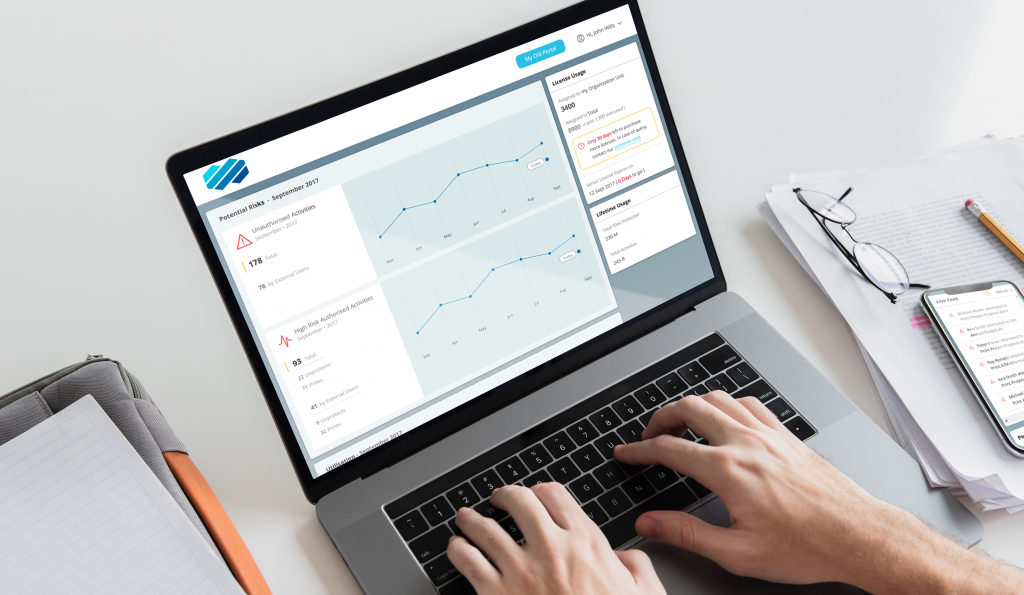Teach For India (TFI) was founded in 2008 with a mission to offer an excellent education to all children. Their flagship offering is a two-year Fellowship program where Fellows develop invaluable teaching and leadership skills, and join a network of like-minded educators and alumni driven to ensure educational equity and social progress. Today, TFI’s 4000+ alumni have collectively reached 50 million children across India.
In the last few years, the Fellowship team had noticed a decline in both the quality and quantity of candidates applying. A large number of drop offs were occurring in the online application, where many prospective Fellows were simply not completing the form. We were brought in to redesign the Online Application as an intuitive and engaging experience for applicants, while also streamlining their journey through the Fellowship selection process.
Expertise
- Research
- Product Strategy
- UX & UI Design
- Rapid User Testing (RITE)
- UX Writing & Communication Guidelines
OUTCOMES
- MVP Application Form designed in 6 weeks
- 10% decrease in the drop-offs at a previously high drop-off section
- 50% reduction in the time taken to complete the application form
- 6% increase in conversion (applicant stickiness)
- Post-MVP, a fully revamped UX and UI that incorporates images and reinforces impact.
APPROACH
We started by understanding the three-step Fellowship selection process (Application Form, Phone Interview and Assessment Centre), expectations from the applicant demographic, strengths of their process and the challenges TFI had faced. With this knowledge we were able to map the entire process and identify gaps that could potentially cause candidates to abandon ship. What we learnt led to a three-pronged Design Strategy:
- Prioritise good information design
- Appeal to the maturity and intelligence of high-performing candidates
- Reinforce TFI as a path to both personal growth and societal impact.
We critically evaluated the structure of the Application Form as well as its content. We made the application easier to navigate by removing duplicate questions, merging certain pages, separating others, and clearly sectioning the application form. We also realised that excessive help text required applicants to read through lengthy instructions for each section. The form copy was altered to a more conversational, clear tone of voice that allowed us to remove redundant text.
We experimented with colours, photography and illustrations to make the form visually appealing to showcase TFI’s impact. An accessibility check of their colour palette found that users with visual impairment were struggling to read the form. By adjusting the colour composition, we were able to significantly improve readability.
Our initial priority was to release an improved form in time for the next Application Cycle in 4 weeks. We worked closely with TFI’s engineering team to understand back-end constraints and create feasible designs without compromising the user experience. An MVP (Minimal Viable Product) was successfully designed, developed, tested and launched in time for the new round of Fellowship Applications i.e. within 23 working days.

After the MVP, we defined the creative direction for an enhanced product experience – We focused on giving applicants a glimpse of the two year program. We fully revamped the dashboard and introduced more functionality that would simplify the application journey – including intuitively provide customised, actionable updates on application status, quick interview reschedule, adding dates to phone calendars etc. Lastly, we added photographs shot at TFI centres and classrooms, introduced vibrant colours and helpful tips to ace each section of the application.
In 5 weeks, we’d designed a fully-featured product with an enhanced user experience, showcasing TFI’s impact and due to be launched in November 2023. Below is a short video showcasing the application process.
Data from the MVP showed a 10% decrease in the drop-offs at certain sections and an overall 50% reduction in time taken to complete the form. As of October 2023, there was a 5% increase in the completion rate of the Application Form, subsequently leading to an increase in candidate Selectivity. Finally, TFI shared that with these changes to the Form, applicants were completing and submitting their Forms even before the Recruiting team reached out to offer assistance – giving the recruiters the bandwidth to engage in more recruiting activities than before!
In December 2023, the Phase II design was officially launched for Round 3 of Applications. You can see the final designs on the Teach For India website here.


